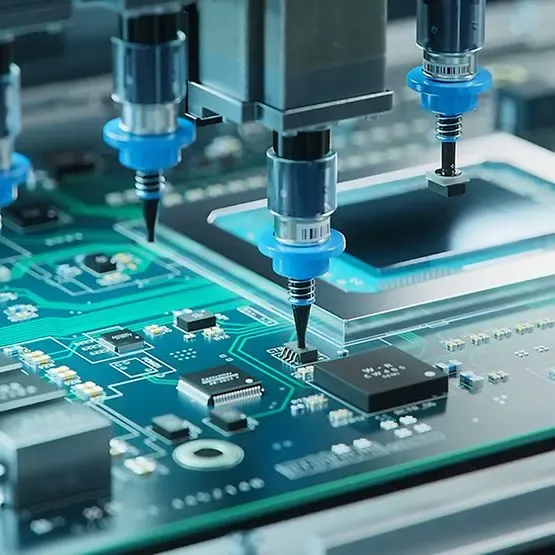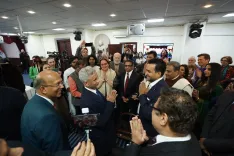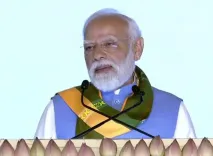PLI Enhancement: FDI Equity Inflow in Manufacturing Sector Rises 69% to $165 Billion

Synopsis
Key Takeaways
- FDI equity inflow increased by 69%.
- Investment projected to exceed Rs 2 lakh crore.
- Approximately 12 lakhs jobs expected soon.
- Electronics manufacturing transformed from net importer to net exporter.
- Automotive PLI initiative attracted $8.15 billion in investments.
New Delhi, March 3 (NationPress) The FDI equity inflow in the manufacturing sector has surged by 69%, escalating from $98 billion (2004-2014) to $165 billion (2014-2024), propelled by the Production-Linked Incentive (PLI) scheme, as announced by the government on Monday.
In a robust effort to enhance industrial growth, the government has substantially increased budget allocations for critical sectors under the PLI scheme for 2025-26, reaffirming its dedication to fortifying domestic manufacturing.
As of August 2024, actual investments amounting to Rs 1.46 lakh crore have been realized, with forecasts indicating this total will exceed Rs 2 lakh crore within the upcoming year.
These investments have already resulted in a striking surge in production and sales, reaching Rs 12.50 lakh crore, while directly and indirectly creating around 9.5 lakh jobs — a figure anticipated to rise to 12 lakhs soon.
Numerous sectors have experienced considerable increases, with allocations for Electronics and IT Hardware climbing from Rs 5,777 crore (revised estimate for 2024-25) to Rs 9,000 crore, and the Automobiles and Auto Components sector witnessing a significant rise from Rs 346.87 crore to Rs 2,818.85 crore.
The textile industry has also received a substantial boost, with its allocation soaring from Rs 45 crore to Rs 1,148 crore, according to government reports.
India’s electronics manufacturing sector has thrived under the PLI initiative, transitioning from a net importer to a net exporter of mobile phones.
Domestic production expanded from 5.8 crore units in 2014-15 to 33 crore units in 2023-24, with imports diminishing significantly.
Exports reached 5 crore units, and Foreign Direct Investment surged by 254%, underscoring the scheme’s role in enhancing manufacturing and investment.
With an allocation of $3.5 billion (Rs 20,750 crore), the automotive PLI initiative has spurred substantial investments and increased production of advanced automotive products.
Over 115 companies applied, with 85 approved for incentives, attracting $8.15 billion (Rs 67,690 crore) in investments, significantly surpassing the target. This achievement has bolstered India’s stature in the global automotive landscape.
The PLI scheme for solar PV modules has accelerated India’s renewable energy objectives. The first phase, endowed with $541.8 million (Rs 4,500 crore), established manufacturing capacity, while the second phase aims to generate 65 GW of capacity with $2.35 billion (Rs 19,500 crore). The initiative is projected to create jobs, diminish imports, and foster solar innovation, according to the government.
India has achieved 60% import substitution in telecom products under the PLI initiative. Global tech firms have established manufacturing facilities, transforming India into a key exporter of 4G and 5G telecom equipment. This expansion strengthens India’s telecom infrastructure and enhances its role in the global supply chain, as stated by the Ministry of Commerce and Industry.









